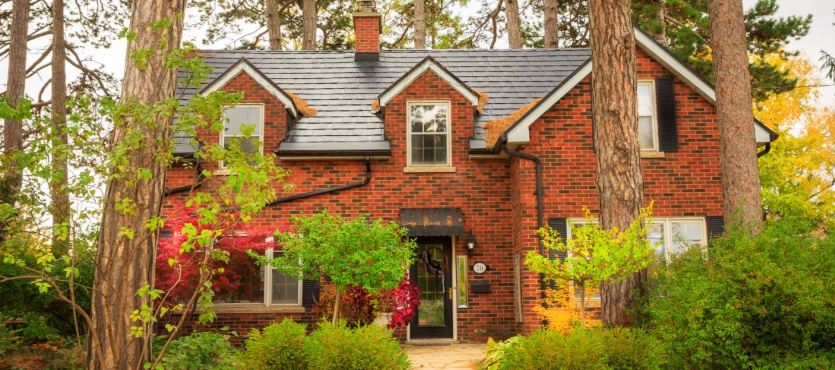Brick homes are renowned for their durability and timeless appeal. However, despite their robust nature, bricks are not immune to the effects of harsh weather conditions. Weatherproofing your brick home is essential to protect it from moisture, extreme temperatures, and other environmental factors. Neglecting this vital maintenance can lead to significant structural damage and costly repairs. These tips and techniques for effectively weatherproofing your brick home can ensure its longevity and structural integrity. With a proactive approach, you can preserve the beauty and functionality of your home for generations.
Understanding the Need for Weatherproofing
Weatherproofing is the process of making a building resistant to weather-related damage. For brick homes, this involves protecting the structure from water infiltration, thermal expansion, and other issues caused by exposure to the elements. Effective weatherproofing can prevent moisture damage, enhance energy efficiency, and extend the lifespan of your home. Preventing water infiltration is particularly crucial, as it can lead to mold growth, mortar deterioration, and structural damage.
Essential Weatherproofing Tips and Techniques
Mortar joints, the spaces between bricks filled with mortar, can crack and deteriorate over time due to weather exposure. Inspecting and repairing these joints is crucial for preventing water infiltration. Tuckpointing is a technique that involves removing damaged mortar and replacing it with fresh mortar that matches the original in color and composition. This process not only restores the appearance of the brickwork but also reinforces its structural integrity. Conduct regular inspections of the mortar joints, especially after harsh weather conditions, to look for cracks, gaps, and signs of erosion.
Apply a Quality Sealant
Applying a high-quality sealant to your brickwork is an effective way to protect it from moisture and other environmental factors. Sealants create a barrier that prevents water from penetrating the bricks and mortar. Use breathable sealants that allow moisture within the bricks to escape while preventing water from entering. This helps avoid issues like efflorescence and mold growth. Apply the sealant using a brush or sprayer, ensuring even coverage, and follow the manufacturer’s instructions for the best results.
Install Proper Flashing
Flashing is a critical component in preventing water infiltration around windows, doors, and other openings. Properly installed flashing directs water away from the building, protecting vulnerable areas from moisture damage. Common types of flashing include metal, vinyl, and rubber. Choose a material that suits your home’s needs and ensure it is installed correctly. Regularly inspect the flashing for signs of damage or wear and replace or repair any compromised flashing to maintain its effectiveness.
Maintain the Chimney
The chimney is often a source of leaks and water damage in brick homes. Proper maintenance is essential to ensure it remains weatherproof. Installing a chimney cap prevents rain, snow, and debris from entering the chimney, while also keeping out animals and birds. The chimney crown, located at the top, should be inspected for cracks or damage. Repairing the crown prevents water from seeping into the chimney structure. Regular maintenance and inspection of the chimney can prevent leaks and structural damage.
Improve Drainage Around the Home
Effective drainage is vital for preventing water from pooling around your brick home, which can lead to foundation issues and water infiltration. Ensure that gutters and downspouts are clean and in good condition, directing water away from the foundation. The ground around your home should slope away from the foundation to prevent water from collecting near the base of the walls. Proper drainage helps protect the foundation and walls of your home from water damage.
Insulate and Ventilate
Proper insulation and ventilation help in maintaining a stable indoor environment and protecting your brick home from extreme temperature fluctuations. Insulate walls, attics, and basements to enhance energy efficiency and reduce thermal stress on the brickwork. Ensure adequate ventilation in attics, crawl spaces, and other areas to prevent moisture buildup and promote air circulation. These measures help maintain a comfortable indoor environment and protect your home from weather-related damage.
Regular Cleaning and Maintenance
Regular cleaning and maintenance of your brick home can prevent the buildup of dirt, algae, and other contaminants that can trap moisture and cause damage. Use gentle cleaning methods, such as low-pressure washing and mild detergents, to avoid damaging the brick surface. During cleaning, inspect the brickwork for any signs of damage or deterioration and address issues promptly. Regular maintenance helps preserve the appearance and structural integrity of your home.
Protecting Your Home with Weatherproofing
Weatherproofing your brick home is essential for maintaining its structural integrity, aesthetic appeal, and energy efficiency. By following these tips and techniques, you can protect your home from the damaging effects of weather and extend its lifespan. Investing in regular maintenance and proactive weatherproofing measures will save you time and money in the long run, ensuring your home remains a safe and comfortable haven.
For professional assistance with weatherproofing and other masonry services, contact Turnbull Masonry. Their expertise ensures that your brick home remains a beautiful and durable sanctuary for years to come. With Turnbull Masonry’s help, you can confidently safeguard your property against the elements, preserving its charm and functionality for future generations.

